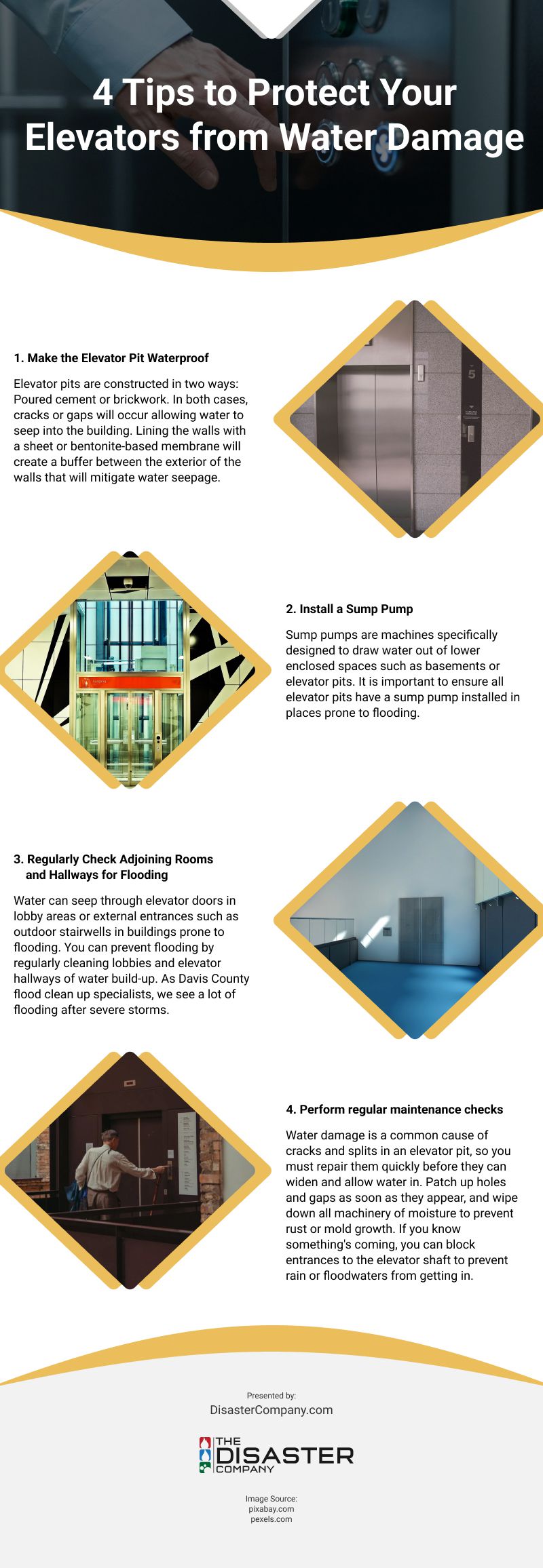
In straightforward situations, elevator flooding will result in the elevator failing. Anyone using the building will experience disruption due to this pricy and annoying issue. The greatest approach to dealing with potential maintenance concerns in a structure is prevention. Fortunately, there are a number of ways to set up an elevator pit to guard against water damage.
Make the Elevator Pit Waterproof
A barrier between the exterior of the walls and the sheet or bentonite-based membrane used to line them will reduce water seepage. An injection of urethane will plug any cracks or openings that develop along the walls, enabling them to be filled with concrete or repaired with a concrete patch.
In most places, it is difficult to provide enough workspace for builders building elevators because of the space restrictions placed on construction. To give better protection, it is worth inspecting the building area to see if there is room to incorporate positive-side waterproofing during construction.
Build a Sump Pump
Sump pumps are tools that are made specifically to remove water from lower, confined locations, like basements or elevator pits. In areas vulnerable to floods, it’s crucial to make sure that every elevator pit has a sump pump installed. Water will still make its way into the pit even if its walls are built to stop it from seeping in, so getting rid of it quickly is essential to preventing stagnation.
Every time water collects at the bottom of the elevator pit, sump pumps are set up to remove it. If a sump pump is overworked and poorly maintained, it can quickly malfunction. Because of this, you should frequently inspect them for any indications of wear or damage and make repairs as necessary.
Planned Flood Checking of Adjoining Rooms and Hallways
By routinely removing water buildup from elevator lobbies and other halls, flooding can be avoided. The risk of standing water and damage can be decreased by installing water-absorbent mats at each entry or having janitors mop up standing water hourly.
During severe weather, water may seep in if the elevator pit or machine room is close to exterior basement exits like outdoor stairwells. As experts in flood cleanup in Davis County, we observe a lot of flooding following powerful storms. Awnings and walls above stairwells will prevent bad weather from leaking in with other employees or delivery people.
Perform regular maintenance checks
While typical building maintenance should include regular inspections, it is beneficial to allocate more time to the elevator pit. Add a routine water damage check in addition to the standard machinery check. Look for water or dampness in all machinery, entrances, and walls.
You should add inspections to your normal checks if a severe weather warning is issued for your region. If you know anything is going to happen, you can block the elevator shaft’s entrances to stop rain or flooding from entering. These precautions only need to be taken during the storm or flood, although having emergency flood protection gear on hand can be useful.
source: https://disastercompany.com/how-to-protect-your-elevators-from-water-damage/
Comments
Download this infographic.
